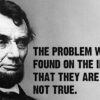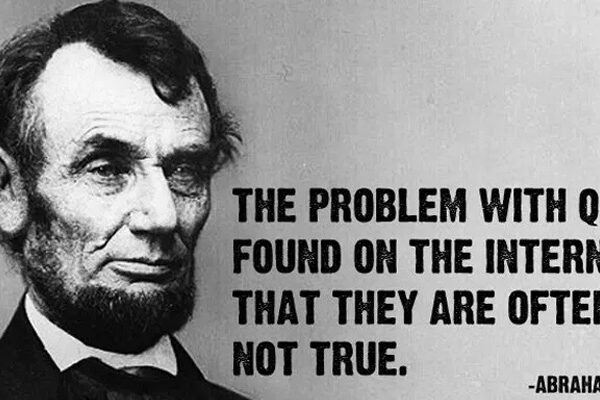 Character profiles, oh what a wonderful thing they’re what the police make on possible criminals, and what writers make on the people whom’s lives they are about to destroy without the slightest regard for their feelings. Fun right? Darn tootin’. That is if you like spending hours a day dedicated to giving hard, meaningful thought to your plethora of complex and interesting characters, and their individual stories, that you care for deeply, so that they can fill a larger role in the actual storyline of your novel… And given that your probably someone who likes to write, we’d say your the type. Now let’s just jump into it.
Character profiles, oh what a wonderful thing they’re what the police make on possible criminals, and what writers make on the people whom’s lives they are about to destroy without the slightest regard for their feelings. Fun right? Darn tootin’. That is if you like spending hours a day dedicated to giving hard, meaningful thought to your plethora of complex and interesting characters, and their individual stories, that you care for deeply, so that they can fill a larger role in the actual storyline of your novel… And given that your probably someone who likes to write, we’d say your the type. Now let’s just jump into it.
What is a Character Profile?
A character profile, to put it short, is an organization of thoughts on one, or possibly more, characters from your current story. But of course, it’s always a little bit more complicated than a simple thought compilation. You see you can’t just throw out random thoughts at a page until it makes sense, you need to have it organized into neat little sections so that it’s more useful, as well as efficient, later on. You need to be able to quickly flip or scan a page to find the relevant info you’re looking for on John Wick from Fortnite (we’re so funny guys, please laugh). But the issue with this is the fact that you may not have all the information in your head at first, and you need a place to splatter your magic brain voodoo. And that’s why we bring to you the First Draft Character Profile.
First Draft Character Profile
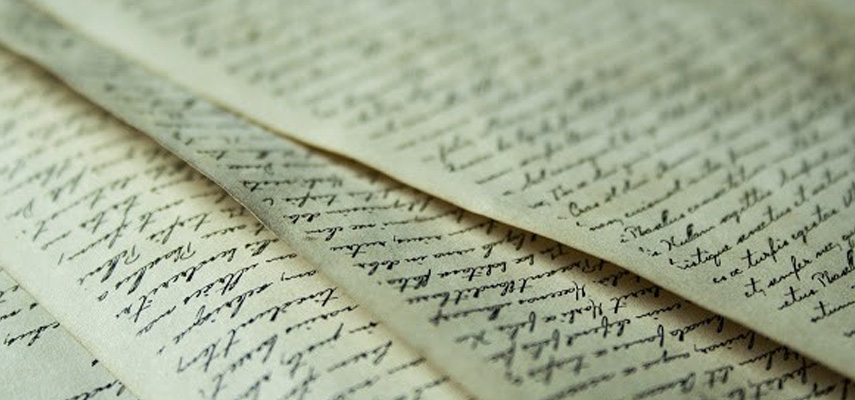 Let’s just address this head-on, in any field where creativity is involved the first try at any project will always be the suckiest of the bunch, and this is no exception for character profiles. So what a first draft character profile, as we said previously, is a place to splatter your magic brain voodoo. Or, for those of you who like clearer answers (otherwise known as plebians), a place to jot down every idea ever on the subject of your character. It’s quite a chill thing, just grab a pen and paper and start jotting things down. Though of course it may be a nightmare for you perfectionists out there, but all you need to do is a) read the next line in a surfer bro voice and b) let it all go, dude (sways hair dudely).
Let’s just address this head-on, in any field where creativity is involved the first try at any project will always be the suckiest of the bunch, and this is no exception for character profiles. So what a first draft character profile, as we said previously, is a place to splatter your magic brain voodoo. Or, for those of you who like clearer answers (otherwise known as plebians), a place to jot down every idea ever on the subject of your character. It’s quite a chill thing, just grab a pen and paper and start jotting things down. Though of course it may be a nightmare for you perfectionists out there, but all you need to do is a) read the next line in a surfer bro voice and b) let it all go, dude (sways hair dudely).
Perfecting Your File
And also for you perfectionists out there, there is a light at the end of the rainbow, that’s how the expression goes right? Eh, it doesn’t matter. What does matter though is that once you’ve finished thought vomiting onto the first draft, you can pick through your vomit and organize it into nice organized chunks. We have no idea why we used a throw-up analogy, but one thing we know for sure is that we need severe mental help 🙂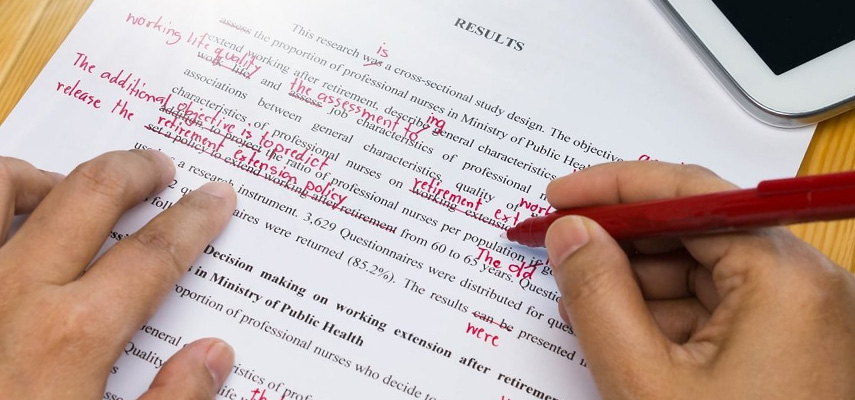
But you may now be complaining even more about how to organize your thoughts, and to that we say, “Stop yuh whining,” and, “Vanarslaguta-dasnulackitaki Asinoth-uv,” our chant to summon the dark lord and get rid of yo… oh wait, no… we’re receiving new information… Chimpulsnuk tells us we have to help you otherwise our souls will be devoured for like the 5th time this week. So we will finally say, “It will be a pleasure to help you, you lovely human being.” And this will not be said with aNy SaRcAsM aT aLl (*whispered* in case you missed it, that was sarcastic, and you’re a plebian).
To organize your file you need to split all of your information into organized groups. The main ones being: Basic Info, Plot Relevance, History, Appearance, Mannerisms, Beliefs and Values, Abilities, Personality, and Character Connections. The list can be expanded into multiple subcategories as well, a few of which we’ll go into, but these are the core 8 sections that matter the most. We will be going into further detail on what stuff qualifies for each category, as well as touching on things that you should be taking into consideration when adding to your list of character traits. Now let’s do that, shall we?
Basic Information
Basic information is referring to everything about a character that is, well, basic. What you should be trying to find is stuff like age, race, species (if needed), name, and height. Basically it’s all the stuff that you would fill out on an online medical quiz find.
This information can also cross paths with the physical appearance section, such as the height of a character, or their age. But in the appearance section you would probably talk about these things in more detail, like adding that even though your character’s 9 million years old, they still look young. And if you have an explanation as to why they still look young add that to the appearance section.
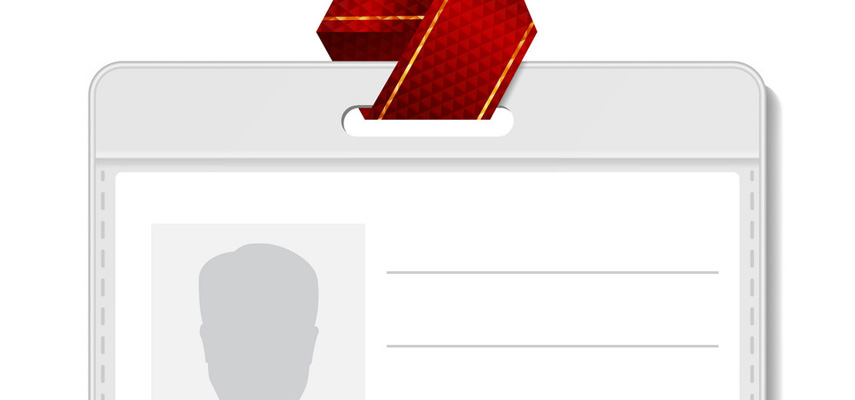 Also, don’t be afraid to annotate any of your feelings or thoughts that don’t really add to the character but rather adds to the overall story or what you were thinking at the time. Like when you put down a characters name you may have some symbolic reasoning behind that name, so it could be a good idea to put a little Writers Note (or WN as we call ’em) to the side, telling future you why you chose this name in particular. And the species section thing may require a little bit more effort on your part, as you could need to make an entire species file, which is both time consuming and something we may talk about in a future article, so keep tuned folks.
Also, don’t be afraid to annotate any of your feelings or thoughts that don’t really add to the character but rather adds to the overall story or what you were thinking at the time. Like when you put down a characters name you may have some symbolic reasoning behind that name, so it could be a good idea to put a little Writers Note (or WN as we call ’em) to the side, telling future you why you chose this name in particular. And the species section thing may require a little bit more effort on your part, as you could need to make an entire species file, which is both time consuming and something we may talk about in a future article, so keep tuned folks.
Plot Relevance
Every character in a story has to play some role and it can range anywhere from small to big, and this is where you decide exactly how big a role they play in the progression of a plot. Write down how big a part they play in the grand scheme of things. Write down if they’re the main protagonist or antagonist, and if they’re not either write down what side they’re rooting for or if they remain neutral. You can also create character profiles for side characters that only appear in one scene, though we suggest this is a fun after-project to do whenever you have time. You can even write down whether this character is going to be killed as a motivator for the main character, stuff like that really helps you start the structure and outline of a story. And remember that the amount of well thought out and developed history really demarcates how important a role is in the story. But, once again, if you do want to create a detailed history for a side character, go for it, no one’s gonna stop you from developing an even better world of characters. But we think it’s about time we move onto the history… did you see the little pun there, heh, heh, ‘about time,’ heh. Why aren’t you laughing plebian?
Character’s History
The reason we put character history before many of the other categories is because it adds a ton of background information to help you think through how and where a character is physically/mentally in your current story. Though you could also put this last if you were creating a character and then molding a history around them, but we like it our way, so you can bugger off you plebian. But to be serious the background information is pretty important as it aides in the creation of complex, 3-dimensional characters who your audience can connect to because they feel real. Nevermind the fact that it helps you write the character as much as it helps you create the book because you can use your made-up history whenever you’re giving interviews as a famous author, and want to drop little lore bits for your fans. (the only advice on that is to not pull a J.K Rowling).
 In the history of a character what you’re mainly looking for are things that have happened prior to or during the characters existence. But make sure to aim for events that impacted their trajectory in life the most, but little details on how they developed their mindset are still incredibly useful. However some things just don’t matter and can be cut entirely, things like Steve picking his nose on November 9th, 1987, at 8:07 P.M. However, if Steve picking his nose on that fateful Monday evening somehow granted him the ability to summon goats, then for sure add that to the list, because goat summoning is a very overlooked and OP superpower, and it should affect his life significantly. But don’t take the idea so far that you don’t add any irrelevant information, as you can create little fun facts about the character for some fun later, and once again for lore drops in your future career as a bestselling author. We encourage the creation of fun facts because if you’re getting down information, even info you won’t be using in the novel, that means you’re really getting to know a character, and the better you know a character the easier they are to write. And that bond between you and the character can come across through the text and imprint onto the reader the idea that you really cared about your creations.
In the history of a character what you’re mainly looking for are things that have happened prior to or during the characters existence. But make sure to aim for events that impacted their trajectory in life the most, but little details on how they developed their mindset are still incredibly useful. However some things just don’t matter and can be cut entirely, things like Steve picking his nose on November 9th, 1987, at 8:07 P.M. However, if Steve picking his nose on that fateful Monday evening somehow granted him the ability to summon goats, then for sure add that to the list, because goat summoning is a very overlooked and OP superpower, and it should affect his life significantly. But don’t take the idea so far that you don’t add any irrelevant information, as you can create little fun facts about the character for some fun later, and once again for lore drops in your future career as a bestselling author. We encourage the creation of fun facts because if you’re getting down information, even info you won’t be using in the novel, that means you’re really getting to know a character, and the better you know a character the easier they are to write. And that bond between you and the character can come across through the text and imprint onto the reader the idea that you really cared about your creations.
You can also jot down what’s going on in their current lives, but make sure to stick it at the end, or give it a timestamp to differentiate what’s past and what’s present, maybe even future if you’re planning multiple books in a series. But if you want to make a whole new section to put the current going-ons of your character that will be perfectly fine, we just think it fits well in the history section.
Character’s Appearance
Character appearance is next up because after History you can determine any events that may have significantly marred or damaged your characters ravishingly good looks. But these last few on the list can come in any order really, except for Character Connections, that one should come last, but that’s neither here nor there as right now we’re supposed to be teaching you about the appearance section of your profile.
 Appearance applies to everything that adds to a character physically. And the goal of this whole section is to really cement a mental image of your character in your head, as without it you really have nowhere to draw descriptions from. We also encourage those of you who feel up to it to try and sketch out your character as to have a physical reference for later on in the writing process. But for those of you who don’t really like to draw, or perhaps don’t think you have the knack for it, you’re absolutely fine, as long as you have the mental image of an epic hero going into battle, or the antagonist evilly evilling around his evil lair. As theses image can really direct you into more detailed descriptions of a character that are more than, “He had brown hair,” and instead fill it with a little bit of extra prose, like for example, “He swayed his thick, curly, golden-brown lox in the sun almost making it seem blond in the areas where the star hit most.” Because word choice and prose is what really gets a writer to like your writing, and not just the story. But appearance also applies to more than just the skin, it can also go into the subcategories of fashion and style, as well as what set’s them apart from others of their own breed.
Appearance applies to everything that adds to a character physically. And the goal of this whole section is to really cement a mental image of your character in your head, as without it you really have nowhere to draw descriptions from. We also encourage those of you who feel up to it to try and sketch out your character as to have a physical reference for later on in the writing process. But for those of you who don’t really like to draw, or perhaps don’t think you have the knack for it, you’re absolutely fine, as long as you have the mental image of an epic hero going into battle, or the antagonist evilly evilling around his evil lair. As theses image can really direct you into more detailed descriptions of a character that are more than, “He had brown hair,” and instead fill it with a little bit of extra prose, like for example, “He swayed his thick, curly, golden-brown lox in the sun almost making it seem blond in the areas where the star hit most.” Because word choice and prose is what really gets a writer to like your writing, and not just the story. But appearance also applies to more than just the skin, it can also go into the subcategories of fashion and style, as well as what set’s them apart from others of their own breed.
As stated previously some of the information from the Basic Information section may have crossover here. But the only difference is that you go farther into the minute details. Ask yourself questions like: Is your character tall? does their tallness and/or shortness affect how the character perceives themself? How does it look on them, does being tall/short fit this person, or does it make them stand out in a bad way? And that’s only a few examples, there are tons of different tracks that you can go down. For race, you need to be more specific as well by determining exactly how light or dark their tone of skin is, and maybe adding why a person with darker parents seems paler than they should be, like maybe they don’t like going outside or they’re really sick. And for age, tell how it affects them, do they have something that allows them to not age? If so write that down. And species is probably what you need to focus on the most from Basic Information, you need to tell what sets them apart from others of their own kind, but of course this will require a little bit more work on your part as you would have to create a species profile demarcating the general appearance and behaviors of the species you wish to compare and contrast against. And while we don’t have an article on intelligent creature making (yet), we can offer you one on monster creation. Click here if you would like to see that, plus monsters are always a fun write.
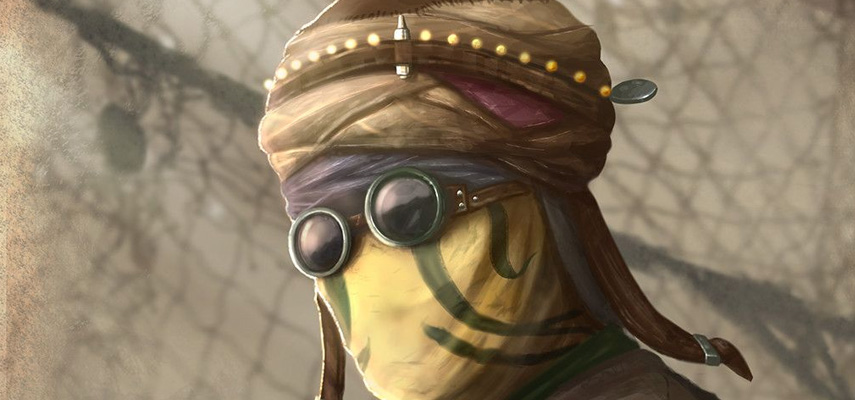 The attire of a character is often overlooked as a petty detail that can be deleted without effecting anything. But as for everything in writing, this is not always true. You need to be adding details that add to your character and their personality, which hopefully you have the slightest idea for by now. And if your character is a lazy person who enjoys comfort more than the opinion of others then wearing stained sweat pants and a casual t-shirt might fit their character better. But if you have someone more distinguished and classy who wouldn’t be caught dead in sweat pants, it’s probably best to go with a different approach, like dresses, suits, other fancy things people wear like bowties. You also have to take into account what they do for work. Take time to find out if this job would require some sort of outfit, and if it does write down that they wear that outfit to work. Another thing is sentimental items, like a necklace passed down through generations that they are always wearing. You can also write down what makes the sentimental item so meaningful to them.
The attire of a character is often overlooked as a petty detail that can be deleted without effecting anything. But as for everything in writing, this is not always true. You need to be adding details that add to your character and their personality, which hopefully you have the slightest idea for by now. And if your character is a lazy person who enjoys comfort more than the opinion of others then wearing stained sweat pants and a casual t-shirt might fit their character better. But if you have someone more distinguished and classy who wouldn’t be caught dead in sweat pants, it’s probably best to go with a different approach, like dresses, suits, other fancy things people wear like bowties. You also have to take into account what they do for work. Take time to find out if this job would require some sort of outfit, and if it does write down that they wear that outfit to work. Another thing is sentimental items, like a necklace passed down through generations that they are always wearing. You can also write down what makes the sentimental item so meaningful to them.
This section could hold mannerisms, in the way that it shows how they look doing things, but we think that it makes more sense in its own section as it is slightly more than just the way a character looks doing something. So let’s talk about mannerisms, right now (dang it couldn’t think of a transitional pun).
Character’s Mannerisms
 Mannerisms are specific actions that mark a character as their own being. And it’s very important to have characters that are distinctly separate because otherwise the reader becomes confused, as they mix up who’s saying what, when, and where. One piece of advice that we have heard on multiple occasions is that you should try and get your characters so distinct and unique from each other, that you can tell who’s talking without dialogue tags. We don’t suggest you do this during the actual novel because some readers just won’t get it and dialogue tags are important, but do this more as an experiment for yourself and friends who are helping you on the project. Including mannerisms actually adds a distinctly realistic feel to a story, because everyone has little ticks and speech patterns, it’s just whether or not they notice them, but everyone close to them can notice these little actions. Try observing yourself for a week and see if you can find any of your mannerisms, either that or you can ask a friend, which would be easier.
Mannerisms are specific actions that mark a character as their own being. And it’s very important to have characters that are distinctly separate because otherwise the reader becomes confused, as they mix up who’s saying what, when, and where. One piece of advice that we have heard on multiple occasions is that you should try and get your characters so distinct and unique from each other, that you can tell who’s talking without dialogue tags. We don’t suggest you do this during the actual novel because some readers just won’t get it and dialogue tags are important, but do this more as an experiment for yourself and friends who are helping you on the project. Including mannerisms actually adds a distinctly realistic feel to a story, because everyone has little ticks and speech patterns, it’s just whether or not they notice them, but everyone close to them can notice these little actions. Try observing yourself for a week and see if you can find any of your mannerisms, either that or you can ask a friend, which would be easier.
The stuff that you should be writing down in this section are things that are unique to your character. Pay attention mostly to speech patterns as those will probably pop up most frequently in dialogue. Determine if they have a loud or quiet voice, find if they stutter, if they trail off and find that they can’t stop talking otherwise the void disappointment of a fallen reality will set in and… *inhale* sorry got off track there… um oh yeah, if so write that down. But behavioral mannerisms are just as important, it’s just that we see them less often. Discover how they hold themselves in conversation and in relaxation, how they move their hands when they talk, how their face betrays their emotions. You also need to take into account how they may react in different situations, or around different people, as no one acts the same around their mother as they do their best friend, and that needs to be noted.
Also, remember to peruse the History section to find anything that could possibly help you determine if it’s logical for them to have a mannerism. But sometimes these behaviors are just randomly developed, and that works just as well. But don’t do it too often, as most things in books need to be logical otherwise it seems just thrown in because it needed to be.
Character’s Beliefs and Values
 This is the part where you talk about stuff like religion and traditions. But it’s also useful as a tool in setting up what is and what isn’t important to a character, which is what you’ll be using to motivate them towards a goal most of the time. Beliefs and values are also pivotal in determining what side of the playing field a character is on, antagonist or protagonist. As opposing beliefs are what really puts two characters up against each other, which doesn’t have to necessarily be the battle between good and evil. Find what words are offensive to this person, and search for what they see as right and just, as well as wrong and evil. You could possibly give them a skewed perspective, in which case you should explain how they got that perspective, as that can be a really interesting dive into the psychology of a character. Seek what religious practices they differ from, or believe to be untrue, as to show that they are thinking about their religion, and trying to find it’s trueness, or maybe show how they know it’s completely true. You could also take some time in this section to write a little background info on the religion, though you could write a whole different profile on religions.
This is the part where you talk about stuff like religion and traditions. But it’s also useful as a tool in setting up what is and what isn’t important to a character, which is what you’ll be using to motivate them towards a goal most of the time. Beliefs and values are also pivotal in determining what side of the playing field a character is on, antagonist or protagonist. As opposing beliefs are what really puts two characters up against each other, which doesn’t have to necessarily be the battle between good and evil. Find what words are offensive to this person, and search for what they see as right and just, as well as wrong and evil. You could possibly give them a skewed perspective, in which case you should explain how they got that perspective, as that can be a really interesting dive into the psychology of a character. Seek what religious practices they differ from, or believe to be untrue, as to show that they are thinking about their religion, and trying to find it’s trueness, or maybe show how they know it’s completely true. You could also take some time in this section to write a little background info on the religion, though you could write a whole different profile on religions.
Character arcs should also appear here, at least the ones that you’ve pre-planned, we find that a lot of the times idea will come to you while writing, and sometimes they’re better than what you’ve already planned. And just in case you don’t know what a character arc is, it’s basically the changing of a character’s beliefs and values over the course of a story, and it’s a very important part of writing. But if you find that along the way you end up on a different path than you intended you can always change the arc, nothing in the profile is set in stone until the stories been released to the public.
Character’s Abilities
Boy, this article is getting long, so let’s start cutting to the chase here, for your sake, and not for our slowly deteriorating minds, shall we, don’t worry though we’ll still have quality (👌) information. In this section, you write down both the magical and non-magical abilities of a character. Meaning things like superpowers, the ability to cast spells, tame dragons, summon goats, etc… you get it, you’ve probably seen this a hundred times, but you may be forgetting about the non-magical world, stuff like higher than average intelligence or strength, or maybe even going as simple as being really good at yo-yo. If it’s something that your character can do that a lot of other characters can’t then it’s an ability. But there is also the inverse ability, or weakness, you can write that down in this section to, things like stupidity and rashness. This section is basically hammering in the principal of setting your character apart from others in the story, but this time through what they are capable of.
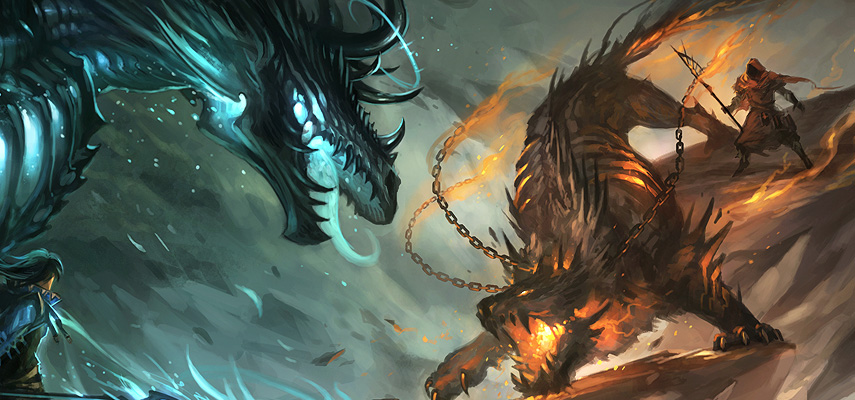 Character’s Personality
Character’s Personality
Personality is a very hard thing to explain, but we will try our ( and please excuse the swear) darndest. If you were to give someone a rundown on your character and who they were you would most likely be listing off personality traits, so that’s where you should start. A quick explanation of your character. After that you should start developing what motivates your character forward, which often intertwines with Beliefs and Values, as well as History, so go peruse those real quick to get a fresh grasp on what train of thought you should be following.
Here is also where you develop mental illness factors, such as Depression or Anxiety, or any others you may be wanting to shine a light on, there are so many that need represented in popular media, like the uncontrollable summoning of small goats in the mind, truly saddening. And in the future, we hope to create an article on how to write mental illness, but we feel we should do more research on certain topics as to not get our facts wrong and possibly hurt someone in the process. But in the meantime, while we have no article on the subject, you should also research and contact officials who actually know things.
Personality also depends heavily on emotion and the expression of that emotion. Does your character hold everything inside then explode, or are they very expressive? That’s for you to decide. But you need to find what emotions affect this character the hardest. You should also have written down what triggers these emotions the most, one thing that is always a good go-to question is “What is the worst thing that could happen to this character?”, and it’s usually very useful as motivation to drive a plot forward.
 Their identity is also built up by their thought processes, otherwise knows as where you’re most likely to put broken logic, and justifications for that logic. You can also write how harsh or arrogant they can come across to others, but this comes more into play in the Character Connections section. And don’t stray away from using simple words like nice, mean, and kind, as they are the basic building blocks that’ll be used to develop more complex emotions.
Their identity is also built up by their thought processes, otherwise knows as where you’re most likely to put broken logic, and justifications for that logic. You can also write how harsh or arrogant they can come across to others, but this comes more into play in the Character Connections section. And don’t stray away from using simple words like nice, mean, and kind, as they are the basic building blocks that’ll be used to develop more complex emotions.
Character Connections
Character connections are pivotal in creating a well put together story, and also creating complex relationships. This is where you write down stuff like romance, friendship, mutual respect, idolization, and any other adjectives you can think of that show how this character feels towards another. Also write down how emotions between the two change throughout the course of a story. Like starting out friends and moving up to the next level of mortal enemies because one kid stole the other’s toy Barry B. Benson from the Bee Movie, an important family heirloom, and then lost it (honestly despicable). But once you’re done with all the characters that they may interact with, then you can create a character web showing how each person connects through eachother.
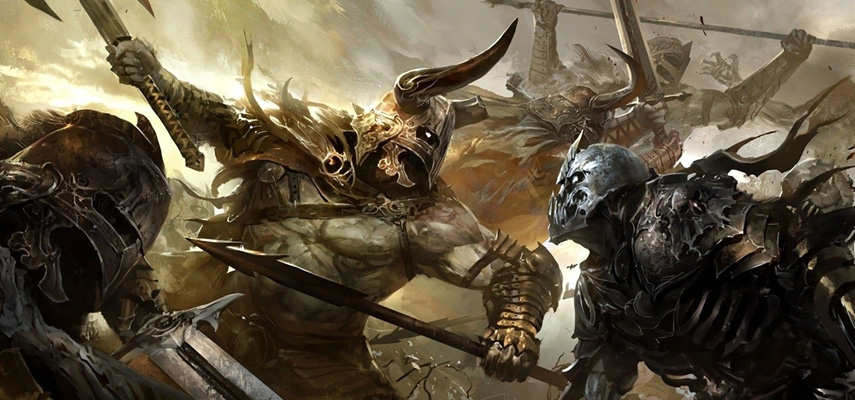 How to Use the Character Profile
How to Use the Character Profile
It’s very simple, just have it by you when you’re writing. And whenever you need information open up to whatever page is relevant and then skim the information till you find what you need. But hopefully the act of writing it down once in the profile will help cement the main ideas of your character and burn them into your skull that when you sleep at night all you see is their face staring at you… and that means only having to check for small details you may have fogotten over time.
Conclusion
We do believe that all of you should at least try at the character profile to see if it works for you. And if it doesn’t, well then try something else out, maybe your not the planning type and you just gotta go with the flow. But whatever your cup of tea is, we hope you at least found something useful among these combinations of words making up sentences, that makeup paragraphs, that make up the entire article. Have a nice time of existence, and see you next week.


